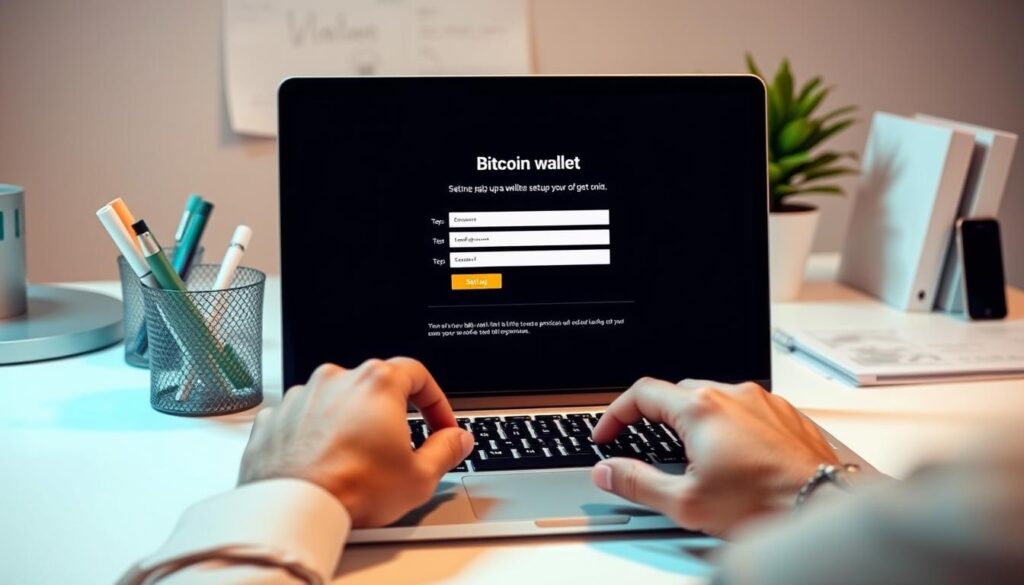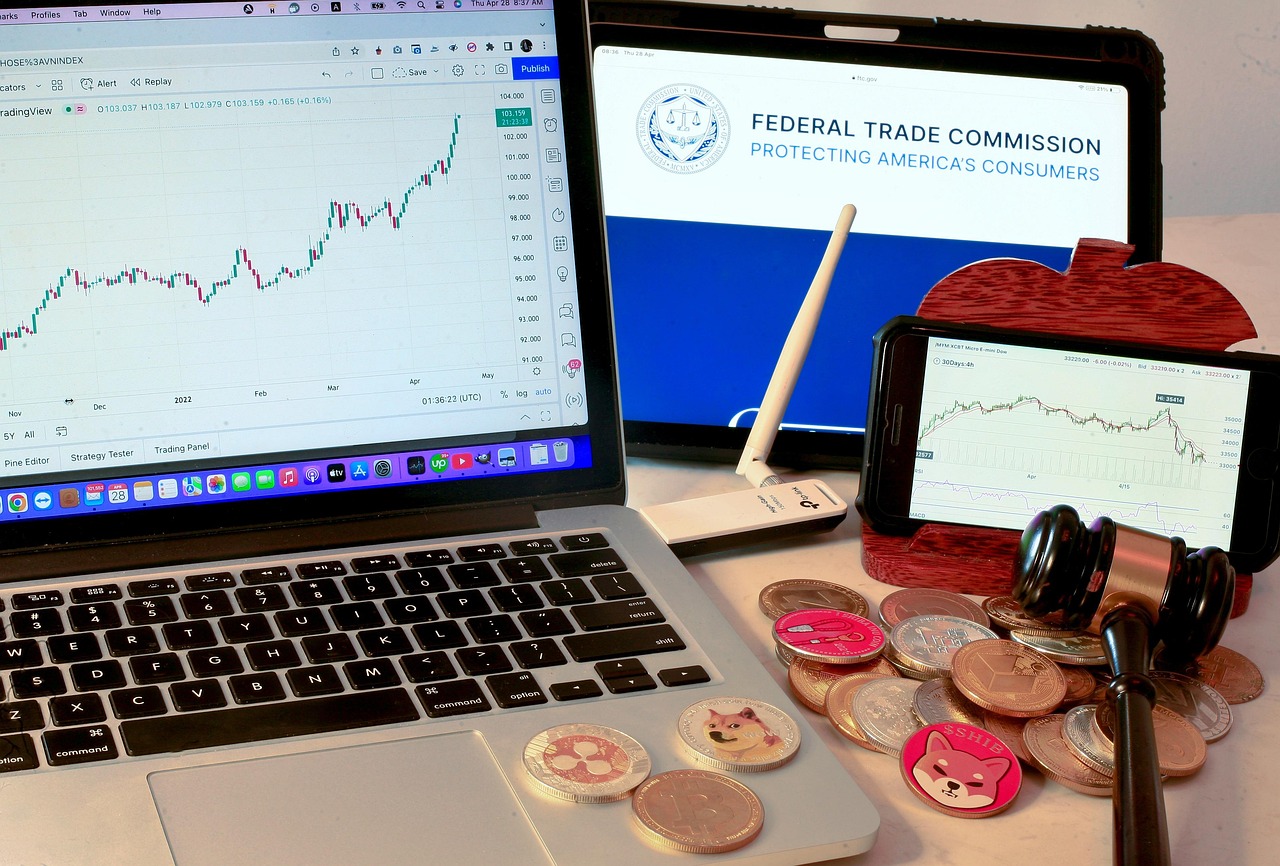The global cryptocurrency market is growing fast. Having a safe bitcoin wallet is key for managing digital money.
More people are using cryptocurrency wallets now. They want to control their money with blockchain tech.
Keeping your investments safe is vital. Learning to get a trustworthy bitcoin wallet is the first step to a secure financial future.
Key Takeaways
- Understand the importance of having a secure bitcoin wallet.
- Learn about the growing adoption of cryptocurrency wallets.
- Discover the role of blockchain technology in securing transactions.
- Find out how to ensure wallet security.
- Explore the first steps towards obtaining a reliable bitcoin wallet.
What Are Bitcoin Wallets and Why You Need One
Bitcoin wallets are key in the world of cryptocurrency. They help users store and manage their digital assets. A bitcoin wallet is more than a place to hold bitcoin; it’s a tool for making transactions on the bitcoin network.
The Function of Bitcoin Wallets in the Cryptocurrency Ecosystem
Bitcoin wallets are essential in the cryptocurrency world. They let users interact with the blockchain. They store private keys, which are needed to access and manage bitcoin. This makes them a gateway to the bitcoin network.
The main functions of a bitcoin wallet include:
- Generating and storing private and public keys
- Facilitating transactions (sending and receiving bitcoin)
- Displaying account balances
- Interacting with the blockchain
Private keys are crucial for signing transactions. They prove ownership of bitcoin being transferred. Without control over these keys, users can’t truly own or manage their cryptocurrency.
Key Components That Make Bitcoin Wallets Secure
The security of a bitcoin wallet depends on several key components. Knowing these components helps choose a wallet that meets your security needs.
| Security Feature | Description |
|---|---|
| Private Key Generation | The method by which private keys are generated and stored. |
| Encryption | The use of algorithms to protect wallet data. |
| Two-Factor Authentication (2FA) | An additional layer of security requiring a second form of verification. |
Understanding these security features helps users make better choices about storing and using bitcoin.
Bitcoin Wallet Adoption Statistics in 2023
In 2023, the numbers on bitcoin wallet adoption tell a story of growth. More people and businesses are using bitcoin wallets. This shows a big increase in interest in cryptocurrency.
Current User Growth Data and Market Penetration
The data shows a steady rise in bitcoin wallet adoption. Now, over 100 million unique users worldwide have a cryptocurrency wallet.
| Region | User Growth (%) | Market Penetration (%) |
|---|---|---|
| North America | 25 | 15 |
| Europe | 20 | 12 |
| Asia Pacific | 30 | 18 |
Demographic Trends Among U.S. Cryptocurrency Users
In the U.S., cryptocurrency users come from all walks of life. Surveys reveal a balanced age range, with most users between 25 and 34.
- 18-24 years: 20%
- 25-34 years: 30%
- 35-44 years: 25%
- 45-54 years: 15%
- 55+ years: 10%
Types of Bitcoin Wallets Available in Today’s Market
Bitcoin wallets have grown to meet different needs. They vary in what they can do and how safe they are. The right wallet depends on your skill level, how much Bitcoin you have, and how easy you want it to be to use.
Hot Wallets vs. Cold Storage Solutions
Bitcoin wallets fall into two main groups: hot wallets and cold storage. Hot wallets stay online, making it easy to send and receive Bitcoin. Cold storage solutions are offline, which makes them safer from hackers and thieves.
Mobile, Desktop, Hardware, and Paper Wallets Compared
There are wallets for everyone:
- Mobile wallets are great for those who are always on the move.
- Desktop wallets strike a balance between safety and ease of use, perfect for those who stay in one place.
- Hardware wallets are super secure, keeping your private keys offline, and are best for big Bitcoin amounts.
- Paper wallets are a type of cold storage where you print and keep your private keys, offering top security but less functionality.
Custodial vs. Non-custodial Options
There’s also a choice between custodial and non-custodial wallets. Custodial wallets are managed by someone else, which is easy but requires trust. Non-custodial wallets let you control your private keys, giving you more security and freedom.
Popular Bitcoin Wallet Providers Gaining Traction in the United States
Bitcoin is becoming more popular in the U.S., and wallet providers are stepping up. The market is seeing more mobile and desktop apps, as well as hardware wallets. These meet different user needs.
Top-Rated Mobile and Desktop Applications
Many mobile and desktop apps are now popular in the U.S. Tangem is one, known for its easy-to-use interface and strong security. It has seen a big rise in downloads, making it a top choice.
Leading Hardware Wallet Manufacturers and Their Market Share
Hardware wallets from Ledger and Trezor are also getting more attention. Ledger is a big player because of its top-notch security and wide support for cryptocurrencies. Trezor is favored for its focus on the user and secure storage.
The competition among these providers is fierce. Users have many options, depending on what they need and want.
How to Choose the Right Bitcoin Wallet for Your Needs
Understanding your needs is key to picking the right bitcoin wallet. There are many options, each with its own features. It’s important to figure out what’s most important to you.
Security Considerations Based on Investment Size
The size of your investment affects security. For big investments, think about using hardware wallets. They have extra security features. A top crypto expert says, “Security is crucial; hardware wallets add a layer of protection against hackers.”
“The best way to store your cryptocurrencies is in a hardware wallet, as it is not connected to the internet, making it much harder for hackers to access.”
Balancing Convenience and Protection
It’s important to find a balance between convenience and security. Mobile wallets are easy to use but may not be as secure as hardware wallets. Think about how you use your wallet to find the right balance.
Cost Analysis of Various Wallet Solutions
The cost of bitcoin wallets varies a lot. Hardware wallets cost more upfront but offer long-term security. On the other hand, mobile and desktop wallets are often free or cheap but may have transaction fees. A cost analysis graph can show these differences.
Step-by-Step Guide to Setting Up Your First Bitcoin Wallet
The first step in your Bitcoin journey is setting up a secure wallet. You need to choose the right wallet type. Then, follow a few simple steps to set it up correctly.
Creating a Mobile Wallet Account
To create a mobile wallet account, download a reputable Bitcoin wallet app. Choose from apps like Coinbase or Blockchain Wallet. After installing, follow the in-app instructions to create an account.
This process usually involves verifying your identity and setting up a PIN or password.
Setting Up a Hardware Wallet
For a hardware wallet, start by buying a device from a trusted manufacturer. Choose from brands like Ledger or Trezor. Once you get your device, follow the manufacturer’s instructions to initialize it.
This includes setting up a PIN and generating your recovery phrase.
Generating and Securing Your Recovery Phrase
Your recovery phrase is key for accessing your Bitcoin wallet if you lose your device or forget your PIN. It’s important to write it down and store it in a secure, offline location. Never share your recovery phrase with anyone or store it digitally.

| Wallet Type | Security Features | Ease of Use |
|---|---|---|
| Mobile Wallet | PIN/Password, 2FA | High |
| Hardware Wallet | Physical Device, PIN, Recovery Phrase | Medium |
By following these steps, you can securely set up your first Bitcoin wallet. Then, you can start your cryptocurrency journey.
Security Best Practices for Bitcoin Wallet Management
Understanding how to manage your bitcoin wallet is key to keeping it safe. As more people use bitcoin, protecting their investments becomes even more important. The rise in cryptocurrency wallet users shows the need for strong security.
Protecting Your Private Keys and Recovery Phrases
Keeping your private keys and recovery phrases safe is crucial. These are the keys to your bitcoin, and losing them means losing access forever. Store them somewhere safe, like a fireproof safe. Never share your private keys or recovery phrases with anyone. A hardware wallet can add extra security.
Implementing Two-Factor Authentication and Additional Security Measures
Two-factor authentication (2FA) is a big step up in wallet security. It asks for a second verification, like a code to your phone, in addition to your password. Using 2FA can greatly lower the chance of someone getting into your wallet. Also, keep your wallet software up to date and watch out for phishing scams.
| Security Measure | Effectiveness |
|---|---|
| Two-Factor Authentication | High |
| Hardware Wallets | Very High |
| Regular Software Updates | Medium |
“The security of your bitcoin wallet is only as strong as its weakest link. Make sure to use all available security features.”
Recent Security Incidents Affecting Bitcoin Wallet Users
The world of cryptocurrency has seen big security problems lately. These issues have shown how crucial it is to have strong security for our digital money.
Notable Hacks and Vulnerabilities in 2023
In 2023, many hacks and weaknesses were found in Bitcoin wallets. One big problem was a major wallet hack that lost millions of dollars. It’s been found that these problems are getting worse, with a 30% jump in hacks in 2023.
| Incident Type | Number of Incidents | Estimated Loss |
|---|---|---|
| Hacks | 15 | $10 million |
| Vulnerabilities | 8 | $5 million |
How Providers Responded to Security Challenges
Bitcoin wallet providers have stepped up their game to fight these security issues. They’ve added things like multi-factor authentication and cold storage. Some even have bug bounty programs to help find and fix problems.
For example, a top wallet provider now makes users confirm transactions in a new way. This makes it much harder for hackers to get in.
How to Buy and Transfer Bitcoin to Your New Wallet
Now that you have a new Bitcoin wallet, it’s time to learn how to buy and transfer Bitcoin safely. Buying Bitcoin is easy through regulated exchanges in the United States. These exchanges offer a safe way to buy cryptocurrency.
Purchasing Bitcoin Through Regulated Exchanges
Regulated exchanges let you buy Bitcoin with regular money. Top exchanges include Coinbase, Gemini, and Kraken. Over 60% of U.S. cryptocurrency transactions happen on these exchanges, showing their key role.
- Coinbase: Coinbase is easy to use and has over 100 million users worldwide.
- Gemini: Gemini is secure and follows strict rules, making it a favorite among investors.
- Kraken: Kraken has advanced features and strong security for both new and experienced traders.
When buying Bitcoin, think about the fees each exchange charges. For example, Coinbase’s fees are about 0.50%. Gemini’s fees are between 0.25% and 1.00%, based on how much you trade.

Transferring Cryptocurrency Between Wallets Safely
When moving Bitcoin between wallets, be careful to keep the transaction safe and successful. Here are some tips:
- Verify the Wallet Address: Always double-check the recipient’s wallet address to avoid sending Bitcoin to the wrong address.
- Use Secure Networks: Do transactions on secure, private networks to lower hacking risks.
- Enable Two-Factor Authentication: Make your wallet more secure by using two-factor authentication to block unauthorized access.
More than 90% of wallet hacks happen because of user mistakes, like using public Wi-Fi or not securing private keys. By following these tips, you can greatly lower the risks of moving cryptocurrency.
Understanding Bitcoin Wallet Fees and Transaction Costs
Bitcoin wallet fees and transaction costs can greatly affect your investment. It’s key to understand them well. As the cryptocurrency market grows, knowing these costs helps manage your bitcoin transactions better.
Current Fee Trends and Statistical Analysis
Bitcoin transaction fees have changed a lot in the last year. Blockchain.com found that fees have been between $1 and over $30. This change depends on how busy the network is.
| Time Period | Average Transaction Fee |
|---|---|
| January 2023 | $5.20 |
| June 2023 | $12.50 |
| December 2023 | $8.10 |
This shows why it’s vital to watch fee trends. It helps you save on transaction costs.
Strategies to Minimize Transaction Costs
To cut down on costs, there are a few ways. Using Segregated Witness (SegWit) addresses can make transactions cheaper. Also, sending money when it’s less busy can save you money.
By using these tips, you can lower your transaction costs. This makes your bitcoin experience better.
The Future of Bitcoin Wallets: Emerging Technologies and Regulatory Developments
The world of cryptocurrency is always changing. This change is affecting the future of bitcoin wallets. New technologies and rules are making these wallets more useful and secure.
Integration with Traditional Financial Systems
Bitcoin wallets are getting better at working with old money systems. This makes it easier for people to switch between different types of money. More than 30% of banks are looking into adding cryptocurrency services.
- Enhanced user experience through familiar interfaces
- Increased adoption among traditional investors
- Improved liquidity through better exchange mechanisms
Upcoming Regulations Affecting U.S. Wallet Providers
New rules are important for bitcoin wallets in the U.S. These rules will make wallets safer and stop bad activities. Some key points include:
- Stricter Know Your Customer (KYC) and Anti-Money Laundering (AML) policies
- Enhanced security measures to protect user funds
- Clearer guidelines on cryptocurrency taxation
Knowing about these trends and rules helps everyone understand the future of bitcoin wallets better.
Conclusion: Starting Your Bitcoin Journey Securely
Starting your bitcoin journey means keeping your cryptocurrency safe. A secure wallet is key to protecting your assets. Knowing about different wallets and their security features helps you make smart choices.
More and more people are using bitcoin wallets, with over 100 million users worldwide. This shows how crucial it is to have strong security. Choose a trusted wallet provider and use two-factor authentication and private key security to stay safe.
Follow the steps in this guide to start your bitcoin journey safely. Doing so will help you protect your cryptocurrency and enjoy the benefits of this new technology.



